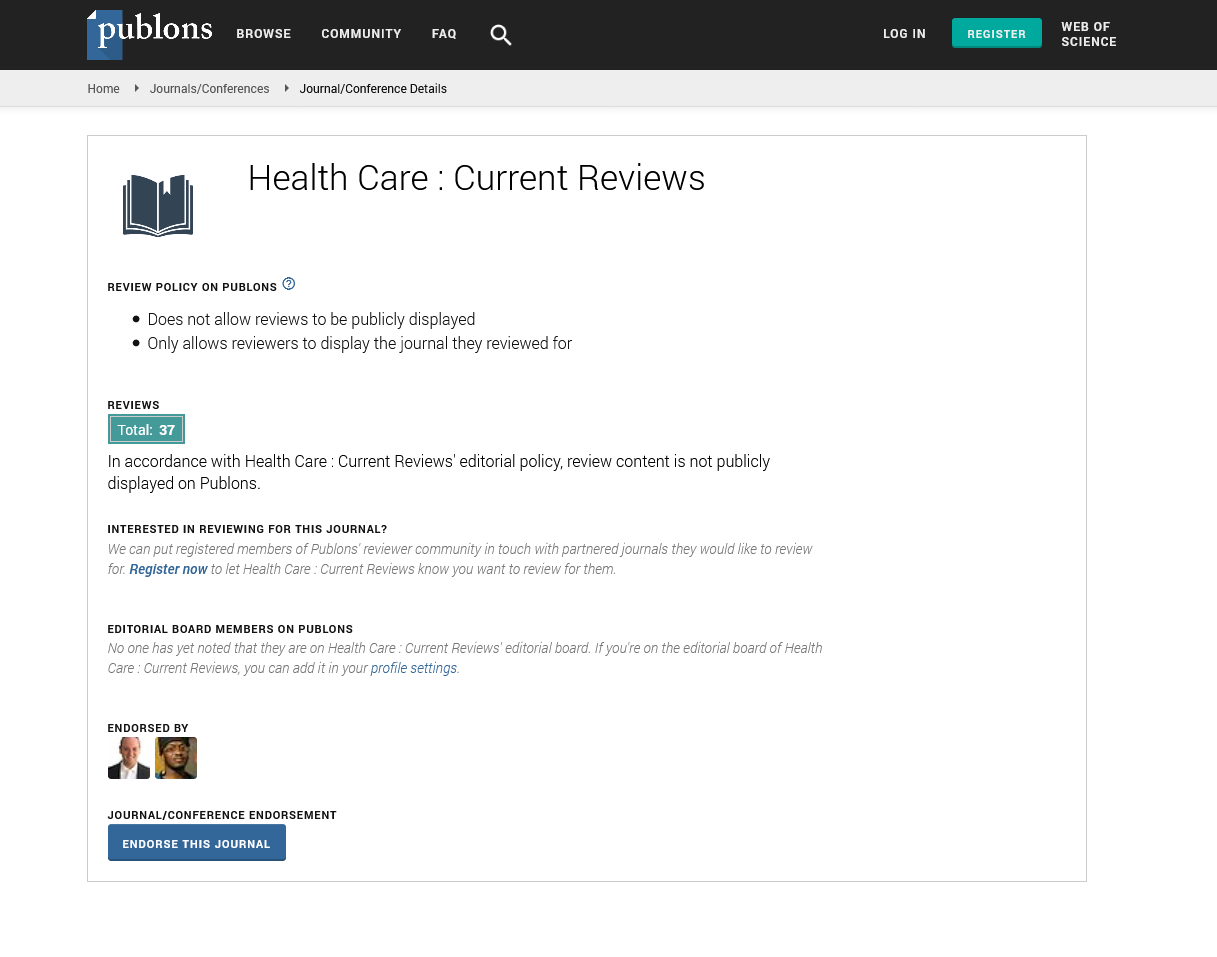Indexed In
- Open J Gate
- Academic Keys
- RefSeek
- Hamdard University
- EBSCO A-Z
- Publons
- Geneva Foundation for Medical Education and Research
- Google Scholar
Useful Links
Share This Page
Journal Flyer

Open Access Journals
- Agri and Aquaculture
- Biochemistry
- Bioinformatics & Systems Biology
- Business & Management
- Chemistry
- Clinical Sciences
- Engineering
- Food & Nutrition
- General Science
- Genetics & Molecular Biology
- Immunology & Microbiology
- Medical Sciences
- Neuroscience & Psychology
- Nursing & Health Care
- Pharmaceutical Sciences
Maternal anthropometry and reproductive outcomes: A population-based study
Euro Health Care and Fitness Summit
September 01-03, 2015 Valencia, Spain
Fernanda Penido Matozinhos, Mariana Santos Felisbino-Mendes and Gustavo Velasquez Melendez
Universidade Federal de Minas Gerais, Brazil
Posters-Accepted Abstracts: Health Care: Current Reviews
Abstract:
Maternal health determined by women nutritional status is also associated with reproductive health and pregnancy viability. We investigated the relationships between maternal obesity and reproductive outcomes occurrence. We conducted a cross-sectional study using the last Brazilian DHS data (2006) of 6,724 women and their singleton pregnancies from 2001 until data collection. Maternal obesity was the main exposure: waist circumference (WC) â?¥80 cm and body mass index (BMI) â?¥25 kg/m2. Outcomes were: Spontaneous abortion, stillbirth and mortality, and also the altered children nutrition, detected by height-for-age and body mass index in z scores from the World Health Organization reference population. Logistic, linear and Poisson regression models were used to estimate associations between maternal altered anthropometry and the reproductive outcomes occurrence. Spontaneous abortion and stillbirths were more frequent among women with overweigh, global and abdominal obesity. Each BMI unit increase (OR = 1.05; 95% CI: 1.02-1.08) increased the chance of having an abortion. Abdominal obesity was strongly associated to the stillbirth occurrence (OR=2.91; 95% CI: 1.32- 6.44) while global obesity was highly predictive of abortions (OR=2.49; 95% CI: 1.45-4.26). Brazilian women abdominal obesity and excess of weight were strong predictors of neonatal death (OR=3.24; 95%CI: 1.30-8.09; OR=2.44; 95% CI: 1.17-5.07, respectively). The results related to the children nutritional outcomes showed that children whose mothers had BMI 35 kg/m2 had HAZ 0.4 higher when compared to the mothers of normal weight (p-trend < 0.0001). These results provide important epidemiological information in the direction of maternal altered anthropometry and the reproductive outcomes occurrence.
Biography :
Email: nandapenido@hotmail.com

